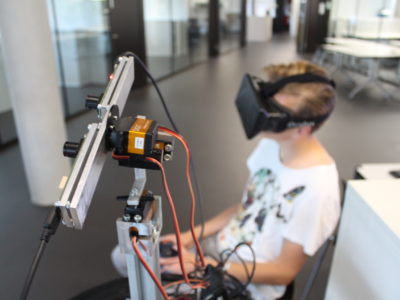Tag: Servo
-

IRE – Camera Gimbal (Part 5 of 7)
—
by
Of course I wanted to make use of Rift’s amazing head tracking and syncing the camera orientation with it. Using some static fisheye cameras to compute the right image for matching spot would have been neat. Such a solution would eliminate problems with quick head movement and latency. But omnistereo imaging is quite difficult for…